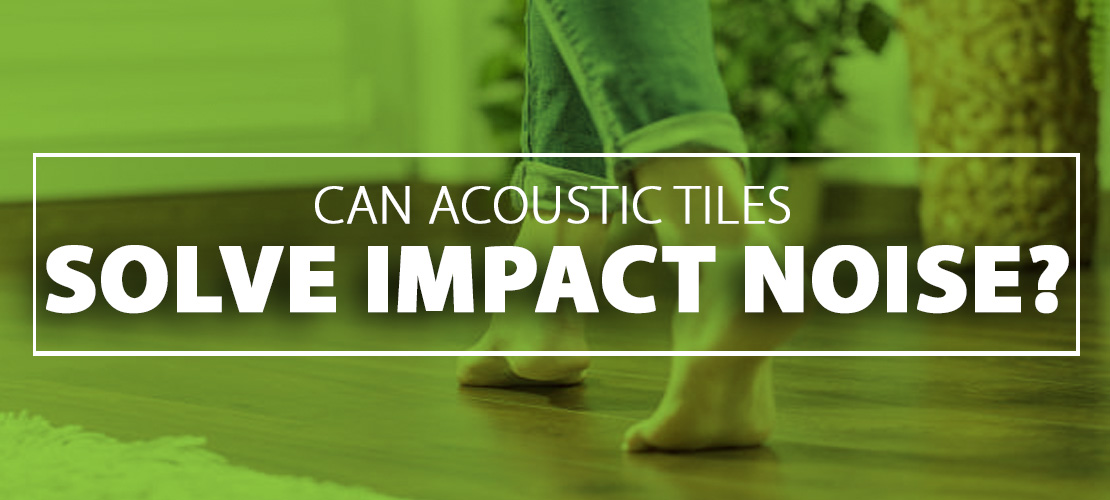0 item(s)
$0.00
Your cart is currently empty.

One of the more frequently asked questions we receive is “Does your Acoustic Tiles solve impact noise?”. The short answer is: no. Let’s look further into the reasons why that is the case.
What is impact noise? Impact sound, (or impact noise), is a form of structure-borne sound that occurs when an object impacts on another, resulting in the generation and transmission of sound. The structural vibration caused by the impact results in the sound being radiated from an adjacent vibrating surface. The most common example of this is footfall from an upstairs apartment. The noise of someone walking hard or running or something falling, which is then transferred to the space below.
How to solve impact noise
Since the sound is originating from a source above you, the problem has to be solved at the upper level. There is nothing that can be done to a ceiling from the floor below to address this. The upper level would need a layer of acoustic underlayment on the floor. This would act as an absorber and dispense the noise across the floor since the vibrations that are being felt are passing through the joists.
Why would ceiling tiles not work?
Simple, acoustic ceiling tiles are meant to reduce the noise within a room. Tiles are meant to block any noise inside the room from escaping. They also help in reducing the reverberations within the room. For example, a movie theater. The black acoustic tiles installed in the ceiling contain the sound within the space and prevent it from leaking out to adjacent movie theaters.
An additional layer of drywall.
An additional layer of drywall will do nothing to help isolate impact footfall noise. The addition of extra mass will not help unless combined with some type of additional resilient clips. Even then the noise reduction would not be significant to warrant the expense and time to do this to a ceiling.
Resilient channel/furring strips
One idea that’s been around is adding resilient channels for soundproofing and combined with Green Glue Noiseproofing Compound. Resilient channel by itself will provide minimal benefit to isolating impact footfall noise. Furring strips provide little resilience with no real benefit in reducing impact noise from above.
Insulation
Insulation is necessary for sound isolation to avoid resonance issues (basically a drum effect) but provides no benefit in soundproofing ceiling impact noise. Impact noises, in essence, are vibrations that are being passed through the joists rather than between the joists.
Mass Loaded Vinyl
As one of the more common noise-blocking materials on the market, you may think that it would solve the issue. Why not put MLV on the ceiling? MLV will not solve the impact noise issues. MLV is considered a noise blocker/absorber but would have to be installed on the floor of the upper level to capture that footfall noise.
Impact noise can be problematic to apartment dwellers and unfortunately, there is no easy and cost-effective way to solve the issue. Anticipating this issue has to be solved by the builder during the construction phase. There are many techniques and products on the market to address it. Addressing it after the building is completed is not the route that should be taken.